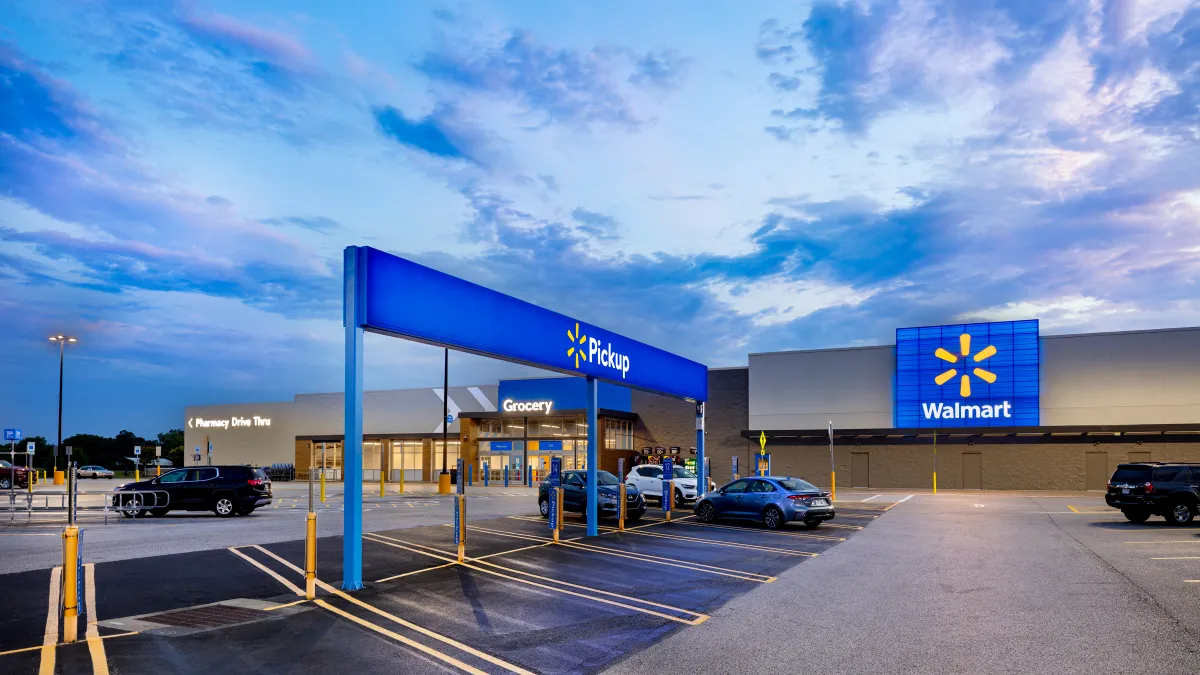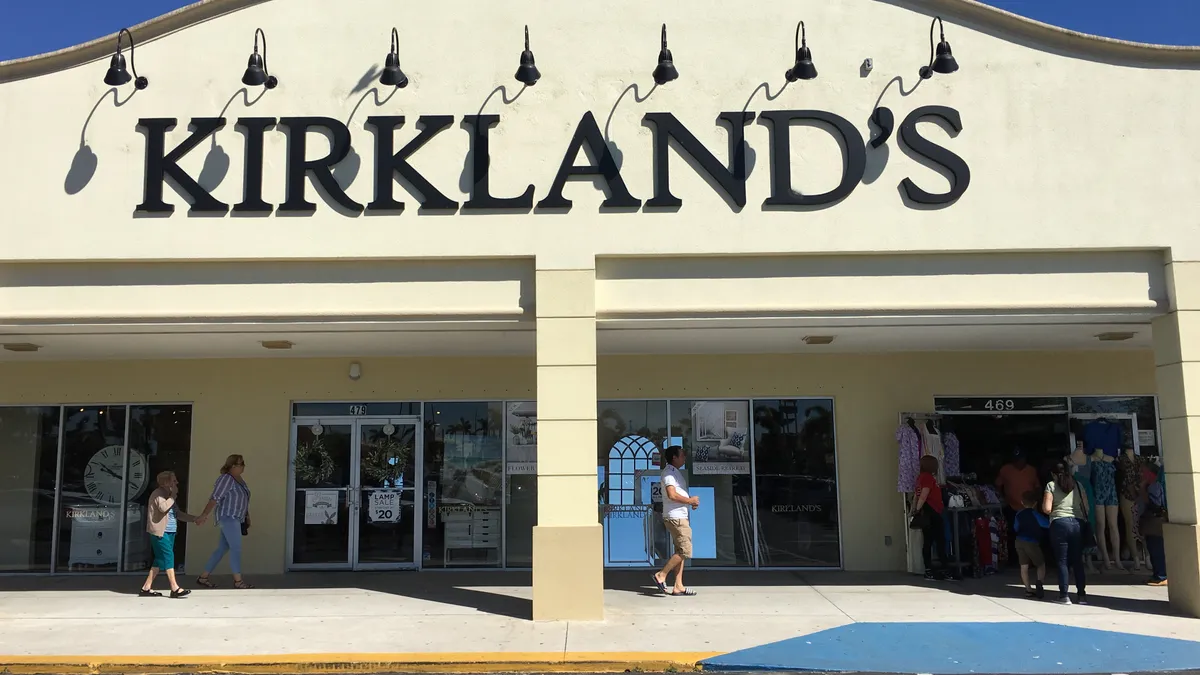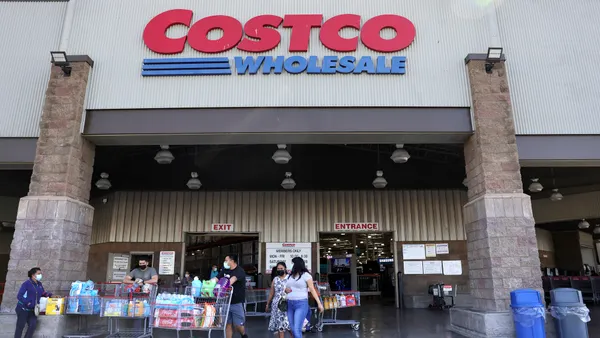After a tough first quarter where sales growth slowed and its U.S. operating income took a $1 billion hit, Walmart is facing some difficult questions over how to stabilize the business.
Last Friday, a panel of top company executives, including President and CEO Doug McMillon and John Furner, who leads the U.S. business, addressed some of those questions from the investor community following its Associate Celebration in Fayetteville, Arkansas. They gave an update on how Walmart is grappling with inflation, labor challenges and more — including what company leaders are doing to grow its Walmart+ subscription service.
Here are the top takeaways from the event.
Inflation and pricing remain top of mind
Company executives received the most questions about how Walmart is grappling with high inflation and handling pricing.
"I am concerned about the inflation rate, and should it stay at this level or go up and be there for a sustained period of time — I think that has a negative impact on too many families," McMillon said.
McMillon said Walmart is keeping the closest eye on its most value-conscious consumer group and how they are impacted by high food costs for staple grocery items such as rice, beans, pasta, tuna and milk.
"We make money in fresh food and in dry grocery, and we can manage inflation in those areas," he said.
Executives emphasized Walmart's Every Day Low Price strategy as a way to continue to attract shoppers across discretionary spending levels and said that among its wide range of suppliers, the company has managed to work with some to find ways to reduce costs.
Judith McKenna, president and CEO of Walmart International, noted company leaders around the world who have "deep experience" in inflationary times are helping the retailer's different teams, including Walmart U.S., navigate the current landscape.
In the future, Walmart is planning for two value propositions depending on how the economic landscape continues for consumers: The company can leverage its low-price reputation if shoppers become even more price-conscious or, if price becomes less of an issue, the retailer can lean into its convenience options, especially around digital shopping, McMillon said.
Labor challenges begin to abate
After a challenging labor front for retailers last year, Sam's Club and Walmart U.S. have both been at "full employment" in recent months with a few gaps in certain geographies or skill sets, executives said.
Sam's Club CEO Kathryn McLay said the club chain's recent revamp of its hiring processes, which now make it possible to hire workers within a 24-hour period, and investments in wages have helped boost employment
Meanwhile, Walmart U.S. has seen its staffing fluctuate. Levels dropped in January as the omicron variant spread and then a "surge" of workers returned in February, Furner said. Since the end of March, employment has further stabilized, he said.
Digital innovations are also changing the nature of work. McMillon said Walmart now has "high confidence" in the productivity that automation can achieve following work over the last year or so with startup partners.
"We're really excited about what that means throughout the supply chain — cost-wise, productivity-wise, but also as it relates to the associate experience," McMillon said, noting that automation can make it a "dramatically different job" for workers when the tech can make pallets "department-ready" when loaded and improve the accuracy and management of inventory.
Ramping up Walmart+ features and membership
Walmart has been tight-lipped about membership numbers for Walmart+, which launched in September 2020, but McMillon said the retailer is looking to increase signups.
Delivery savings could be a key perk to attracting and locking in Walmart+ members. Furner noted that, anecdotally, Walmart+ members who are using the service more frequently are choosing delivery more often than going to the store.
Furner also referenced the recently expanded fuel savings for members, which is now a discount of up to 10 cents on each gallon of fuel at participating fuel stations, as a way the retailer is looking to boost membership. In March, the retailer announced the rollout of the membership to its associates — a move that not only serves as an employment perk but could also lead to potential customer sign-ups as workers talk about their experiences with the service.
Going forward, Furner considers the fuel savings, in-store scan-and-go payment option and free delivery as particularly appealing features for shoppers. The unlimited delivery feature is becoming more attractive as Walmart has improved its capacity with more time slots and better product availability, he said.
Boosting store operations and standards
In the last year — particularly the "last few months" — the company has worked to improve how Walmart's stores and supply chain work together as part of the retailer's efforts to make store operations and standards better for its customers and workers, Furner said.
For customers, the retailer is focused on net promoter scores, which measure customer loyalty, and in-stock availability across channels, Furner said.
On the labor front, Walmart is looking to leverage digital innovation and listening sessions to help its workers. Last year, the retailer offered smartphones to more than 740,000 of its U.S. workers and launched its workplace app Me@Walmart.
"Since that point, we've been taking all the processes and technology they need and putting it on that device so that when an associate walks in, ready to go to work, they clock in on their device, and then everything they need is right there in their hands to try to save them time and make it easier for them to be productive," Furner said.
The retailer is using employee feedback to develop solutions and products to address problem areas.
Furner said Walmart has held listening sessions for managers, including regional, divisional and store ones, and for associates to not only help employees feel more connected to their stores but also show they have a say in improving the company.
"We've got digital listening tools where we get 10 million questions a week. ... Just last week, we had 3,000 associates we had listening sessions with," Furner noted.
























